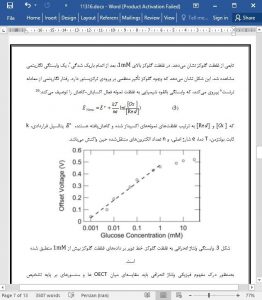Since their development in the 1980’s organic electrochemical transistors (OECTs) have attracted a great deal of interest for biosensor applications. Coupled with the current proliferation of organic semiconductor technologies, these devices have the potential to revolutionize healthcare by making point-of-care and home-based medical diagnostics widely available. Unfortunately, their mechanism of operation is poorly understood, and this hinders further development of this important technology. In this paper glucose sensors based on OECTs and the redox enzyme glucose oxidase are investigated. Through appropriate scaling of the transfer characteristics at various glucose concentrations, a universal curve describing device operation is shown to exist. This result elucidates the underlying device physics and establishes a connection between sensor response and analyte concentration. This improved understanding paves the way for rational optimization of enzymatic sensors based on organic electrochemical transistors.
1. Introduction
The field of organic electronics is in the midst of tremendous development, with organic semiconductors being considered for applications in electronic and optoelectronic devices, including light emitting diodes, photovoltaic cells, and thinfilm transistors.1 Key advantages of these materials include tunability of their electronic properties via chemical synthesis and compatibility with roll-to-roll fabrication, which can yield ultra-low cost manufacturing. An emerging focus in the field involves the use of organic-based devices as transducers in chemical and biological sensors.2–6 In particular, organic thinfilm transistors (OTFTs) are attracting a great deal of interest for sensor applications due to their simple electrical readout, inherent signal amplification, straightforward miniaturization, and facile incorporation into arrays and circuits. To date, OTFTs have been used to sense mechanical deformation and pressure, humidity and organic vapors, pH and ion concentrations, and a variety of biologically relevant analytes.2–7
4. Conclusions
The behavior of OECT-based enzymatic sensors was investigated. PEDOT:PSS was used as the conducting polymer, and the redox enzyme glucose oxidase was introduced to the electrolyte of the OECT in order to detect glucose. Appropriate scaling of the transistor transfer characteristics at various glucose concentrations yielded a universal curve of the source–drain current versus effective gate voltage. This observation helped elucidate the physics of OECT-based enzymatic sensors. An effective gate voltage was used to account for Faradaic contributions to the potential at the gate electrode. A connection between source–drain current and analyte concentration was developed and resulted in an excellent fit to experimental data. This improved understanding paves the way for rational optimization of OECT-based enzymatic sensors.











